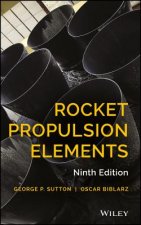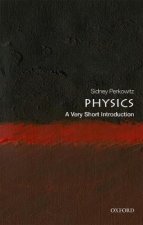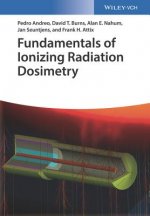
Kód: 01415110
Reuven Ramaty High Energy Solar Spectroscopic Imager (RHESSI) - Mission Description and Early Results
Autor Robert P. Lin, Brian R. Dennis, A.O. Benz
The Reuven Ramaty High Energy Solar Spectroscopic Imager (RHESSI) satellite was launched on 5 February 2002. Its objective is to study the energy release and particle acceleration in solar flares through observations of X-rays and ... celý popis
- Jazyk:
 Angličtina
Angličtina - Vazba: Pevná
- Počet stran: 456
Nakladatelství: Springer-Verlag New York Inc., 2003
- Více informací o knize

4673 Kč

Skladem u dodavatele v malém množství
Odesíláme za 10-15 dnů
Potřebujete více kusů?Máte-li zájem o více kusů, prověřte, prosím, nejprve dostupnost titulu na naši zákaznické podpoře.
Přidat mezi přání
Mohlo by se vám také líbit
-

Happy Earth: 2 New Edition: Class Book
379 Kč -

Happy Birthday Me
403 Kč -

Design Automation for Timing-Driven Layout Synthesis
4673 Kč -

Figuring It Out
903 Kč -

Volání rodu
185 Kč -

Mitmachen - Politik - Berufsfachschule
952 Kč -

Persisch-deutsches Woerterbuch fur die Umgangssprache
1698 Kč
Dárkový poukaz: Radost zaručena
- Darujte poukaz v libovolné hodnotě a my se postaráme o zbytek.
- Poukaz se vztahuje na celou naši nabídku.
- Elektronický poukaz vytisknete z e-mailu a můžete ihned darovat.
- Platnost poukazu je 12 měsíců od data vystavení.
Více informací o knize Reuven Ramaty High Energy Solar Spectroscopic Imager (RHESSI) - Mission Description and Early Results
Nákupem získáte 467 bodů
 Anotace knihy
Anotace knihy
The Reuven Ramaty High Energy Solar Spectroscopic Imager (RHESSI) satellite was launched on 5 February 2002. Its objective is to study the energy release and particle acceleration in solar flares through observations of X-rays and gamma rays. Two novel technologies are combined to obtain both spectra and images over a broad energy range. For the spectroscopy, cooled hyperpure germanium detectors are used to cover the energy range from 3 keV to 17 MeV with unprecedented keV-class resolution. Since focusing optics are not possible for making images with such high energy photons, tungsten and molybdenum absorbing grids are used to modulate the X-rays and gamma-rays coming from the Sun as the spacecraft rotates. This allows the spatial Fourier components of the source to be determined so that images can be made in spectral ranges where astronomical images have never been produced before. These new instrumental techniques require equally innovative software to reconstruct X-ray and gamma-ray spectra and images from the observations. §Ample solar activity, abundant observations, and an open data policy have attracted many researchers. Astronomers face in the RHESSI mission an exciting new scientific potential. It has unusually broad possibilities for improving our understanding of the enigmatic solar flare phenomenon that is becoming increasingly important as society depends more and more on space-based technologies. §In this volume, the functioning of RHESSI is explained, the data analysis techniques including spectroscopy and image reconstruction are introduced, and the experiences of the first few months of operation are summarized. First scientific results are presented that provide the essential base for more extended studies using RHESSI data and complementary observations by instruments on other spacecraft and at ground-based solar observatories.Scientists and students will find here the latest discoveries in solar flare research, as well as inspiration for future work. The papers will serve as references for the many new discoveries to come from the continuing RHESSI observations.The Reuven Ramaty High Energy Solar Spectroscopic Imager (RHESSI) satellite was launched on 5 February 2002. Its objective is to study the energy release and particle acceleration in solar flares through observations of X-rays and gamma rays. Two novel technologies are combined to obtain both spectra and images over a broad energy range. For the spectroscopy, cooled hyperpure germanium detectors are used to cover the energy range from 3 keV to 17 MeV with unprecedented keV-class resolution. Since focusing optics are not possible for making images with such high energy photons, tungsten and molybdenum absorbing grids are used to modulate the X-rays and gamma-rays coming from the Sun as the spacecraft rotates. This allows the spatial Fourier components of the source to be determined so that images can be made in spectral ranges where astronomical images have never been produced before. These new instrumental techniques require equally innovative software to reconstruct X-ray and gamma-ray spectra and images from the observations.§Ample solar activity, abundant observations, and an open data policy have attracted many researchers. Astronomers face in the RHESSI mission an exciting new scientific potential. It has unusually broad possibilities for improving our understanding of the enigmatic solar flare phenomenon that is becoming increasingly important as society depends more and more on space-based technologies. §In this volume, the functioning of RHESSI is explained, the data analysis techniques including spectroscopy and image reconstruction are introduced, and the experiences of the first few months of operation are summarized. First scientific results are presented that provide the essential base for more extended studies using RHESSI data and complementary observations by instruments on other spacecraft and at ground-based solar observatories.Scientists and students will find here the latest discoveries in solar flare research, as well as inspiration for future work. The papers will serve as references for the many new discoveries to come from the continuing RHESSI observations.
 Parametry knihy
Parametry knihy
Zařazení knihy Knihy v angličtině Mathematics & science Physics Applied physics
4673 Kč
- Plný název: Reuven Ramaty High Energy Solar Spectroscopic Imager (RHESSI) - Mission Description and Early Results
- Autor: Robert P. Lin, Brian R. Dennis, A.O. Benz
- Jazyk:
 Angličtina
Angličtina - Vazba: Pevná
- Počet stran: 456
- EAN: 9781402011078
- ISBN: 1402011075
- ID: 01415110
- Nakladatelství: Springer-Verlag New York Inc.
- Hmotnost: 1840 g
- Rozměry: 235 × 155 × 30 mm
- Datum vydání: 31. March 2003
Oblíbené z jiného soudku
-

Astrophysics for People in a Hurry
392 Kč -

Fundamentals of Geophysics
1705 Kč -

Rocket Propulsion Elements 9e
4076 Kč -

Introduction to Atmospheric Physics
2132 Kč -

Life on the Edge
288 Kč -

Stellar Evolution, Nuclear Astrophysics, and Nucleogenesis
326 Kč -

Welcome to the Universe
949 Kč -

CO2 Laser Surgery
1542 Kč -

MoonFire
579 Kč -

Introduction to Modern Astrophysics
2311 Kč -

Physics: A Very Short Introduction
233 Kč -

Origin and Nature of Life on Earth
1430 Kč -

Astrophysics: A Very Short Introduction
233 Kč -

Geophysics: A Very Short Introduction
253 Kč -

Cosmology: A Very Short Introduction
233 Kč -

Lectures on Astrophysics
1238 Kč -

Principles of Planetary Climate
2227 Kč -

Black Holes, Wormholes and Time Machines
1466 Kč -

Atlas of Antarctica
1134 Kč -

Schaum's Outline of Applied Physics, 4ed
801 Kč -

Creation Of The Universe
984 Kč -

Biophysics
1950 Kč -

Plant Physics
1430 Kč -

Feynman's Lost Lecture
233 Kč -

Geology: A Complete Introduction: Teach Yourself
383 Kč -

Black Holes: A Very Short Introduction
253 Kč -

Our Cosmic Habitat
486 Kč -

Water: A Very Short Introduction
278 Kč -

Student's Guide to Atomic Physics
684 Kč -

Cell Biology by the Numbers
1417 Kč -

Fundamentals of Fluorescence Microscopy
1610 Kč -

Galaxies: A Very Short Introduction
253 Kč -

Atmosphere: A Very Short Introduction
253 Kč -

Biophysics For Dummies
427 Kč -

Student's Manual for A First Course in General Relativity
829 Kč -

Physics in Biology and Medicine
2811 Kč -

Stars: A Very Short Introduction
233 Kč -

Fundamental Astronomy
2139 Kč -

First Course in General Relativity
1560 Kč -

Galactic Dynamics
3004 Kč -

Introduction to Cosmology
1433 Kč -

University Physics
924 Kč -

Chasing New Horizons
762 Kč -

Astrophysics for Physicists
2080 Kč -

Exact Space-Times in Einstein's General Relativity
2660 Kč -

Astrophysics through Computation
2318 Kč -

Stars and Stellar Processes
2210 Kč -

Fundamentals of Ionizing Radiation Dosimetry
4393 Kč -

Rainbow And The Worm, The: The Physics Of Organisms (3rd Edition)
840 Kč
Osobní odběr Praha, Brno a 12903 dalších
Copyright ©2008-24 nejlevnejsi-knihy.cz Všechna práva vyhrazenaSoukromíCookies


 Vrácení do měsíce
Vrácení do měsíce 571 999 099 (8-15.30h)
571 999 099 (8-15.30h)